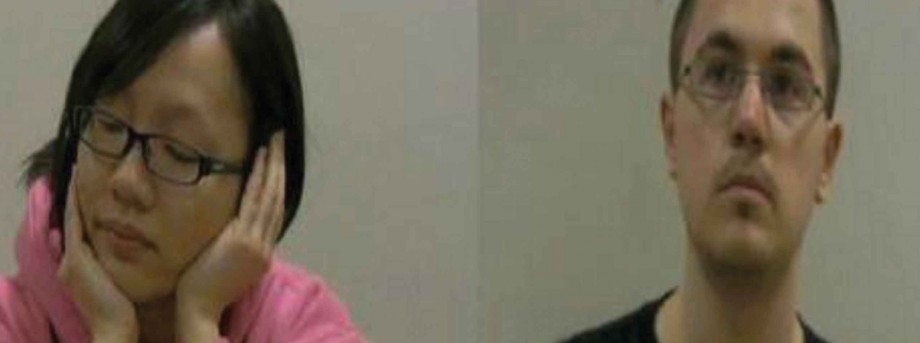
What made them do it?
May 9th, 2013
We can often predict what people are going to do. But is it possible to guess what made them do it?
Psychologists at The University of Nottingham Malaysia Campus (UNMC) believe we can guess what provoked a reaction by simply observing a brief sample of behaviour.
The study — Can People Guess What Happened to Others from Their Reactions? — was conducted by PhD student Dhanya Pillai using eye-tracking technology. The results have been published in the prestigious academic journal PLOS ONE.
The study showed that people are able to infer backwards: successfully deduce from a small sample of behaviour what someone had previously experienced.
Dhanya, who was supervised by Dr Elizabeth Sheppard and Professor Peter Mitchell in the School of Psychology, said: “Putting my acting skills to the test, I performed a range of events and filmed the person’s response. By telling them a joke, paying them compliments, or keeping them waiting, I set out to provoke a variety of reactions. It was crucial that they didn’t know the events were staged. They believed that they were waiting for an experiment which had not started so we were able to capture their natural reactions.”
Thirty-five volunteers guessed what had happened to the people in the videos. Although the videos were only seven seconds long, participants correctly identified the event in the majority of cases.
Dr Sheppard said: “The people Dhanya filmed responded to the same event in a variety of different ways — so on receiving a series of compliments, some laughed, some looked confused and others looked embarrassed — yet volunteers watching the videos were able to figure out that they were responding to the same event.”
Dhanya said: “To succeed in this task, it was necessary to retrodict, that is, to reason backwards from behaviour to infer a situation that had already happened.”
Dhanya recorded the eye movements of participants as they watched the videos to analyse their decision-making process. She had expected the volunteers to look more at the eye region to gauge the person’s reaction. But using varied eye movement proved more effective.
Dhanya said: “Although some previous research has implied that the eyes have a special significance for mentalising, it was surprising to find that looking at the eye region was not associated with superior identification of the event; instead our findings indicated that the eye movement strategy varied according to the reaction seen in the video.”
Dhanya aims to develop a paradigm for reasoning people’s mental states in real situations.
The research might also help us discover how we flexibly understand the behaviour of others, even where it departs from how we would be inclined to act ourselves.
Tags: Can People Guess What Happened to Others from Their Reactions, Dhanya Pillai, Dr Elizabeth Sheppard, PLOS ONE, Professor Peter Mitchell, School of Psychology, The University of Nottingham Malaysia Campus, UNMC
Leave a Reply
Other Research

Welcome to Associate Pro-Vice-Chancellor for Researcher Academy and Research Culture Development
Professor Jeanette Woolard has been appointed as Associate Pro-Vice-Chancellor for the Researcher Academy and Research Culture Development. […]

Strong research funding performance is a fantastic achievement
Professor Tom Rodden’s research update I am delighted to report that the University of Nottingham is […]

